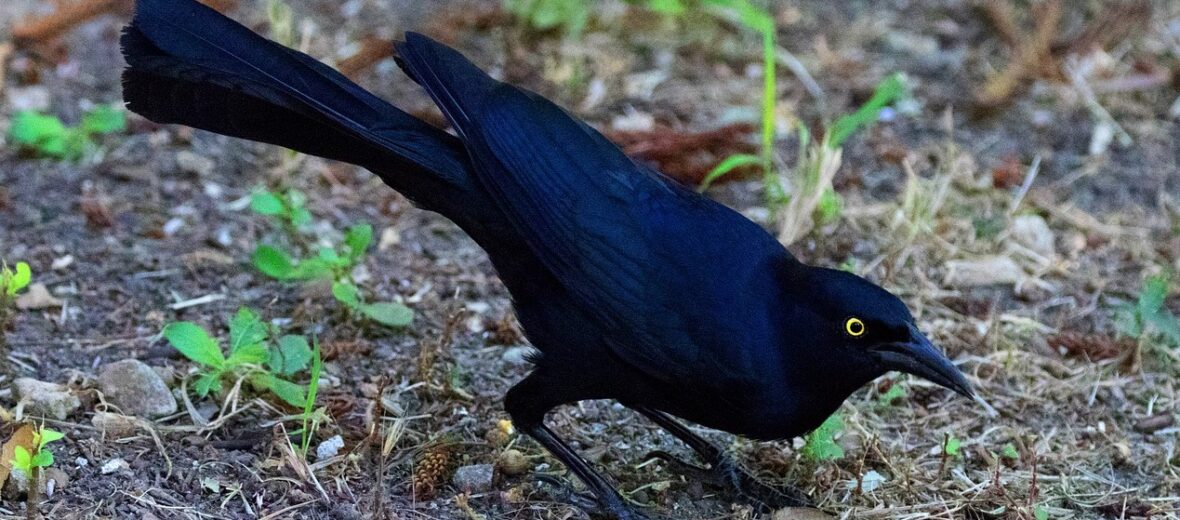
The male great-tailed grackle is a medium-sized, noisy black bird with shimmering iridescent purple and black feathers and an impressive tail. The brown females are roughly half the size of males. They can be found on golf courses, fields, lawns, and marshes throughout the Southwest, southern Great Plains and on down to Mexico, Central America, & South America. They are a social and boisterous bird that congregates in trees at night and fill the air with their calls that sound like a loud version of a horse rider clicking to get a horse to gidyup, amongst other sounds. These birds are numerous and listed as Least Concern by the IUCN.
First the Stats…
Scientific name: Quiscalus mexicanus
Weight: Up to 5.7 ounces
Length: Up to 15 inches
Wingspan: Up to 18 inches
Lifespan: Up to 7 years
Now on to the Facts!
1.) These birds are extremely opportunistic and have no problem stealing table scraps from fast food restaurant tables or picnic tables.
2.) They eat insects, spiders, snails, millipedes, tadpoles, small fish, crayfish, lizards, amphibians, eggs, nestlings of other birds, and sometimes even adult birds, waste grain, seeds, nuts, fruit, berries, and table scraps.
3.) Just like the 200+ known other species of birds in the world, grackles participate in a practice known as “anting”. Anting is where the bird will grab and rub ants all over their bodies. It is not yet known what the purpose is of this behavior. It is assumed that the ants excrete a sort of insect repellent and rubbing the ants on their feathers helps to keep away mites.
4.) In winter, huge flocks of great-tailed grackles congregate in “roost trees.” These roosts can house 1,000s of grackles.
5.) The great-tailed grackle is one of North America’s fastest expanding bird species.
But wait, there’s more on the great-tailed grackle!
6.) Males partake in a boisterous display during mating season. The male will perch in the open, fluff out their feathers, partially spread their wings and tail, and rapidly flutter their wings while making loud calls.
7.) To help cool down, these birds will raise their heads up to the sky and open their mouths to help release heat.
Did you know…?
Great-tailed grackles have learned to recognize certain researchers while working in their breeding colonies. They have been known to react with a “chut” sounding alarm call when they spot a researcher.
8.) Females lay between 4 – 7 eggs each season.
Now a Short Great-Tailed Grackle Video!
Also, check out the Critter Science YouTube channel. Videos added frequently!
Want to suggest a critter for me to write about? Let me know here.




Leave a Reply